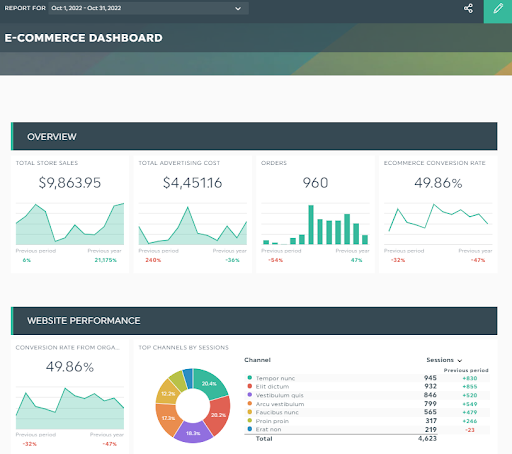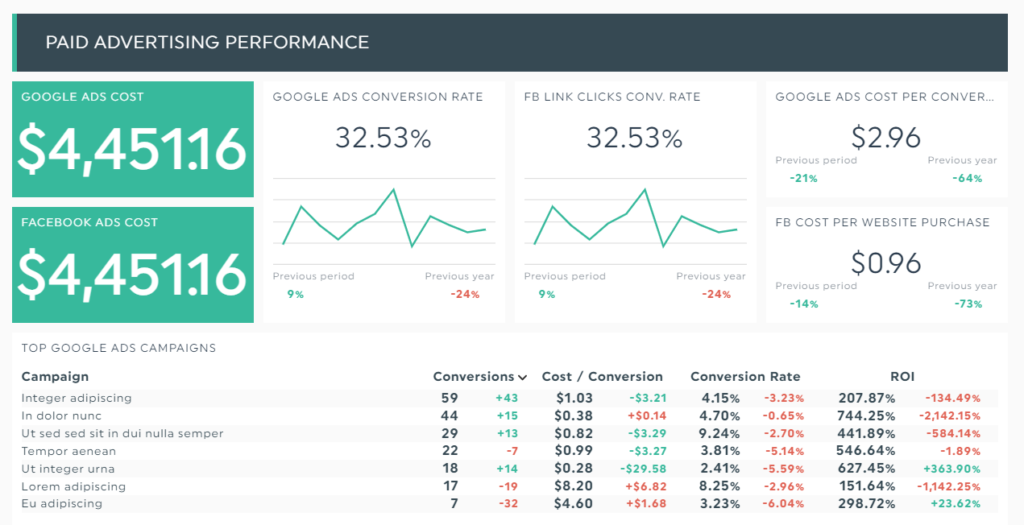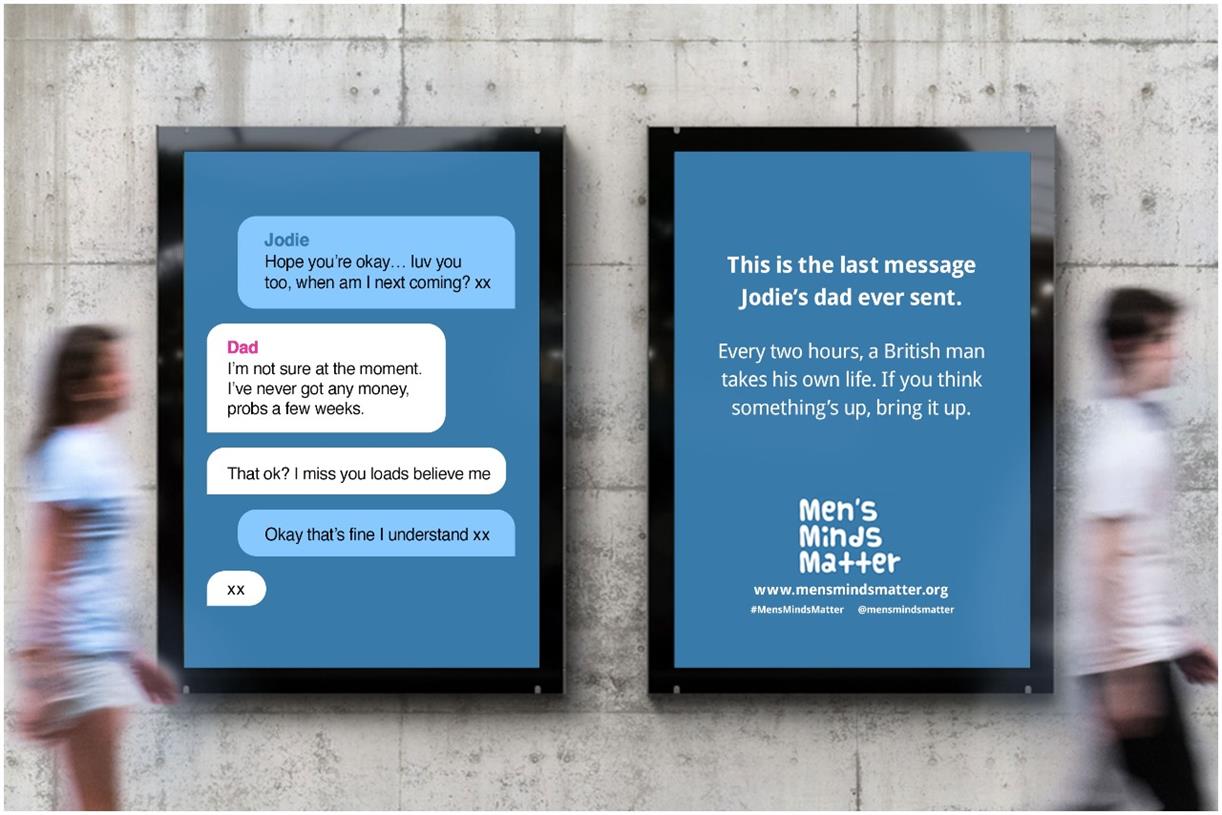4 Pro Tips for Creating Powerful Agency Dashboards
If there’s a word to describe the client reporting process, it’s time-consuming. Picture it. You login to Facebook with a client’s account, take a few screenshots, paste them on a spreadsheet, and send it to them. You log out...

If there’s a word to describe the client reporting process, it’s time-consuming.
Picture it.
You login to Facebook with a client’s account, take a few screenshots, paste them on a spreadsheet, and send it to them. You log out and login back again with another client’s account, take the screenshots, and … well, you know how it goes.
The entire cycle repeats every. single. time.
That’s a huge amount of time wasted. That’s time better spent on actual data analysis and making important decisions.
Fortunately, your days of painful data collection are over.
This guide shows you how to gain back hours of your time with our auto-generated marketing agency dashboard. By this end, you’ll know to create a powerful dashboard that impresses even the toughest clients.
Let’s begin.
What is an Agency Dashboard?
An agency dashboard is a visual report that shows a marketing campaign’s overall performance.
Made possible by automation, agency dashboards display data from individual channels or combine data from different integrations (e.g., engagement from LinkedIn + engagement from Facebook) into one place.
You can easily create these dashboards using reporting tools like DashThis. Connect your favorite channels just once and let it gather your entire marketing data into one beautiful report automatically.
Here’s how an auto-generated eCommerce dashboard might look like when you connect DashThis with Google Ads, Klaviyo, and Google Analytics. Note how quick and easy it is to evaluate the performance at a single glance.
 Resource: DashThis
Resource: DashThisUnlike spreadsheets, this agency dashboard allows stakeholders to view their performance in real-time.
There’s more.
With DashThis, you can share these reports at a predetermined schedule and attach a PDF via an automatic email dispatch, eliminating the hassle of sending them manually.
How to Create the Perfect Agency Dashboard for Your Clients?
31% of marketers struggle to unify their different customer data sources, hinting at an inefficient tech stack, misaligned customer-centric departments, and issues with cross-functional collaboration.
Fortunately, using a tool like DashThis will help you gather your entire data from multiple channels into one place.
Here’s how you can build a unified digital agency dashboard in three easy steps:
Connect your favorite marketing tools Select a template from 40+ options Pick your metrics on Preset Widgets (tip: scroll through our KPI examples list if you’re stuck)DashThis will transform your raw data into eye-catching graphs and charts automatically. Drag and drop the widgets as you desire to form a cohesive look.
 Resource: DashThis
Resource: DashThisAutomated marketing reporting tools create multiple dashboards in the blink of an eye. You can save them as templates, clone them for future use, and even white-label them to fit your unique brand.
Grab your free 15-day trial to gain back hours of your time with our auto-generated agency dashboards today. No credit card is required.
Agency Dashboard Templates
Templates ensure consistency in reports across your multiple channels and clients. Here are three popular (and free!) templates you can use to build your agency dashboards today.
Digital marketing report template
Digital marketing encompasses all channels to attract, nurture, and convert customers. Track your progress on Google Analytics and more using the template below.
This lets you identify rooms for improvement without squinting at the mind-numbing numbers.
Social media report template
Social media is a source of education, entertainment, and engagement for your target audience.
Essentially, it’s all the things you need to do before selling to customers. Identify where your best customers today are hanging out with this comprehensive template.
This helps you identify your top channels and better prioritize for the next month, quarter, or year.
PPC report template
PPC reaches your ideal customers and attracts sales more quickly than SEO. Measure your ROI for your paid ad efforts with this in-depth dashboard.
Better yet, gather both your PPC and SEO data in a single dashboard to show the ROI of your integrated approach.
Creating Agency Dashboard: 4 Useful Tips
The look of your report can make or break a presentation.
Do an awful job, and the client will start questioning your expertise. But when you design it well? You leave a memorable impression, secure buy-in for your ideas in the next campaign, and renew the client’s contract without investing in more legwork.
Here are four effective tips to accomplish all three and make the most of your auto-generated agency dashboards on DashThis.
1) Less is more
Choose high-impact KPIs that align with business goals.
For example, a group of C-suite enterprise clients looking to improve revenue growth might focus on net new annual recurring revenue (ARR) as its KPI and the following metrics to measure their progress: number of subscriptions, expansion ARR, and churn rate.
2) Group data together
The best visual dashboards let designs breathe.
Free of unnecessary elements, these reports distill complex information into digestible graphics and create a drastically easy browsing experience simultaneously.
You can easily accomplish this, even if you have zero design and coding skills.
Use headers to separate data unrelated to each other or allow clients to process and reflect on their progress. Drag and drop relevant data within the same section to provide the overall campaign performance of similar channels.
 Group all paid marketing metrics to create a bird’s-eye view
Group all paid marketing metrics to create a bird’s-eye viewFor example, a SaaS revenue marketing team using Salesforce CRM might group marketing and sales data in its performance dashboard to attribute campaigns directly to revenue.
3) Use the comment box to add value
Marketers wear different hats.
Besides tracking metrics in marketing campaigns and strategizing the next moves, we’re also in charge of educating clients.
Consider adding comments or notes within the agency dashboard to provide more information about the campaign. For example, if you’re working with a client with no marketing expertise, include a note to define the metrics.
These notes are also great for explaining any erratic performance (e.g., sudden rise in bounce rate). Use them as often as you need throughout the report.
4) Present it to your clients
Clients decide if they want to extend a contract based on performance and experience, and the dashboard presentation plays a large part in both factors.
While it’s true that the notes and comment tools in your marketing reporting tool will suffice, presenting the agency dashboard to your clients boasts certain attractive perks, like clearing up any confusion and cross- and upselling them.
Say you’re presenting the number of unique page views in the content marketing campaign and the client casually mentions they received customer feedback about the poor browsing experience. This creates a rare opportunity for you to offer them your technical SEO services, like an SEO audit.
What better way to improve your customer lifetime value and revenue than focusing on your best existing customers?
Stop spending precious hours gathering data from multiple sources across different clients.
These four pro tips show you how to whip up a beautiful marketing agency client dashboard within minutes, improving your productivity and saving time for more value-added activities.

 ShanonG
ShanonG 

























![Are You Still Optimizing for Rankings? AI Search May Not Care. [Webinar] via @sejournal, @hethr_campbell](https://www.searchenginejournal.com/wp-content/uploads/2025/06/1-1-307.png)




